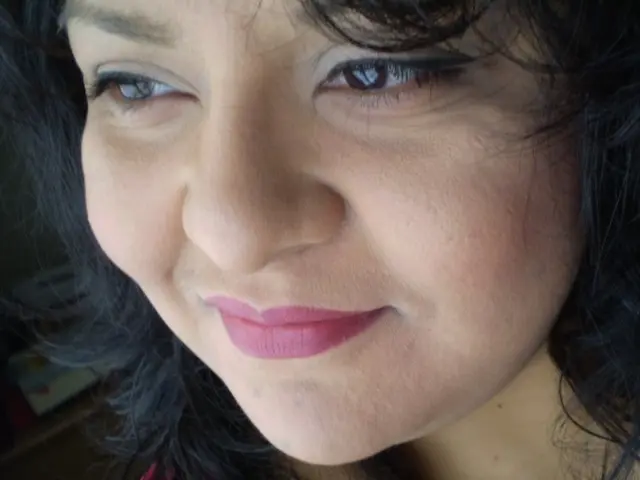Characterizing Avoidant Attachment in Interpersonal Bonds (Manifestations & Triggers)
Are you tangling with an avoider in a relationship, or perhaps wrestling with separation anxiety yourself? Let's demystify the dreaded avoidant attachment style in relationships.
Are you ready to overhaul your thoughts and finally find that elusive happiness and security in your connections? Keep reading on.
Undoubtedly, we all have an attachment style when it comes to relationships, with avoidant being one. Ever wondered, "What the heck is avoidant attachment in relationships?" Let's dive in.
How attached are you?
Take the Quiz ⚡️
What is the avoidant attachment style?
We all sport a unique attachment style in relationships, and the avoidant is no exception. Curious, this theory dates back to the 1950s when British psychoanalyst, John Bowlby, attempted to understand the distress of a kid separated from its caregiver.
In the ensuing years, Mary Ainsworth delved into these infant-parent separations, and afterwards her protégé, Mary Main, further refined her work, classifying the four attachment categories we recognize today.
Kicking off in the 1980s, Hazan and Shaver posited that romantic love mirrors the same affectionate bond we share with our parents on a fundamental level. Thus, an adult's security in relationships is a partial reflection of their past experiences with their primary caregiver.
Avoidant attachment in infants manifests as rejecting their caregiver even during moments of longing for closeness or shying away from physical contact.
Variations of avoidant attachment
We encounter two primary flavors of avoidant attachment: fearful-avoidant and dismissive-avoidant. Let's explore both types in more detail.
Fearful-avoidant attachment
This moniker might seem a bit judge-y, so let's call these individuals "Spice of Lifers." They passionately yearn for love but worry about fabrication, betrayal, or rejection.
For example, let's look at the life story of Anna. Anna is creatively expressive and longs for love deeply, but she's filled with apprehension. Longing for vibrant connection, she's terrified of rejection and abandonment. Consequently, she frequently sabotages her relationships.
Periodically, Anna becomes annoyed with her partner, her behavior volatile, going from passionate to detached in a flash. Anna's attachment style would thus be described as "fearful-avoidant."
Dismissive-avoidant attachment
Let's refer to these people as "Rolling Stones." They cut off from their emotions, unable to reach the same loving, harmonious "emotional volume" as their partners.
For instance, check out the story of Amy. Amy is fiercely independent and generally mingles with acquaintances, not forming deep connections. Despite hurling herself headlong into relationships, she experiences considerable overwhelm after three months and withdraws.
Amy can find solace in her independence but quickly feels vulnerable, anxious, and fears being ditched. Jealousy lurks when her partner shows affection towards others, prompting her to go to extreme lengths to win them back.
This behavior often spirals into an anxious-avoidant vortex. If Amy decides to stay the course in this manner, we would categorize her as "dismissive-avoidant."
So, how did the avoidant attachment style form?
Attachment styles develop through the relationships we forge with our primary caregiver during childhood and our adult relationships. Avoidant attachment forms primarily in unstable environments characterized by emotional neglect or invalidation.
Households void of emotional closeness disqualify unpleasant emotions as unacceptable, while enmeshed homes disregard personal boundaries and privacy, allowing unresolved emotional upheaval like shame, anger, depression, anxiety, and unresolved grief.
These environments hinder understanding one's feelings and lead to confusion and anxiety regarding emotional cues, causing many to become emotionally detached.
How does avoidant attachment play out in relationships?
Emotional detachment is a breeze to spot in relationships. Many of us have dealt with a partner who harnesses avoidance as a coping mechanism.
When you broach a troubling subject with an emotionally detached individual, they often clam up, shrug off your concerns, or change the subject.
Assertive communication can gravely impact these connections.
Signs of an avoidant attachment style
Got a sneaking suspicion you, or your partner, harbor an avoidant attachment style? Let's examine some telltale signs.
- They become instantly enamored with you and cannot seem to get enough
- But around the 3-6 month mark, they begin to focus on the flaws in the relationship and will always be on the lookout for "greener pastures"
- They often struggle with making commitments and maintaining relationships, but they take commitment quite seriously
- They are sensitive to even the tiniest requests, feeling as if their partners always demand too much of them
- They try to dodge responsibility and become defensive when asked to share the load
- They are emotionally disconnected, but their feelings can stir intense reactions that may leave them feeling repulsed
- Saddled with fears of failure or perfectionism, they maintain a tough facade to avoid appearing weak or vulnerable
- They are drawn to "challenging" partners who push their buttons and make them work for their affections
- However, when their partner is too "nice," they question their ability to make them happy and perceive them as uninteresting
- They often wrestle with addictions such as workaholism, food abuse, or substance abuse
Recognize yourself or your partner in these signs? To fully understand avoidant behavior, let's delve into the different avoidant styles.
The distinct avoidant styles
The avoidant style encompasses two primary categories, fearful-avoidant, and dismissive-avoidant. Both share similarities, but their behavior deviates somewhat.
Fearful-avoidant attachment
Fearful-avoidants are wary of their partner's love and their own ability to sustain a healthy romantic relationship. They exhibit nervousness and hypersensitivity towards even gentle requests for emotional connection.
For example, let's examine Aaron's story. Aaron gravitates towards creative, affectionate individuals, but his anxiety looms large. His fear of abandonment and disconnection propel him to act out impulsively, spiraling into unpredictable behavior.
His feelings oscillate between passion and detachment. Deep down, Aaron longs for intimate love and connection, but he's terrified of being trapped in a relationship that feels confining.
Aaron is thus categorized as a "fearful-avoidant."
Dismissive-avoidant attachment
Dismissive-avoidants are emotionally disconnected, evading deep feelings, and can hardly reach the emotive levels that their partners crave and yearn for.
For instance, let's mull over Barry's life. Barry is self-reliant and thrives on forging connections with others, but he becomes overwhelmed easily and withdraws. He finds comfort in his independence but experiences bouts of vulnerability, anxiety, and fears of abandonment.
His emotions cannot reach the same harmonious "emotional volume" as his partner, and at times, his emotions seem non-existent. Barry's attachment style would thus be described as "dismissive-avoidant."
- The avoidant attachment style, attributed to John Bowlby's work in the 1950s, reflects a unique way individuals approach relationships, often stemming from past experiences with their primary caregiver.
- Avoidant attachment in infants can manifest as a rejection of the caregiver, even during moments of longing for closeness, or shying away from physical contact.
- Mary Main's refinement of Mary Ainsworth's work classified the four attachment categories we recognize today, including the fearful-avoidant and dismissive-avoidant styles.
- A "Spice of Lifer," or a fearful-avoidant individual, passionsately yearns for love but worries about fabrication, betrayal, or rejection, sometimes sabotaging their relationships due to fear of rejection and abandonment.
- A "Rolling Stone," or a dismissive-avoidant person, cuts off from their emotions, unable to reach the same loving, harmonious "emotional volume" as their partners, often retreating after three months in relationships and struggling with emotional intimacy.
- Avoidant attachment forms primarily in unstable environments characterized by emotional neglect or invalidation, which can lead to confusion and anxiety regarding emotional cues, causing many to become emotionally detached.
- In relationships, emotional detachment can be spotted when a partner clams up, shrugs off concerns, or changes the subject when broaching troubling subjects, making assertive communication challenging.
- Signs of an avoidant attachment style include an instant enchantment with a partner, but a focus on flaws after three to six months, struggles with making commitments, sensitivity to even small requests, emotional disconnect, fear of failure or perfectionism, a tough facade to avoid appearing weak or vulnerable, addiction tendencies, attraction to challenging partners who push buttons, and questioning a partner's ability to make them happy when they are too "nice."
- The avoidant style encompasses two primary categories, fearful-avoidant, and dismissive-avoidant, both sharing similarities but behaving differently. Fearful-avoidants are wary of their partner's love and their own ability to sustain a healthy relationship, exhibiting nervousness and hypersensitivity towards even gentle requests for emotional connection. Dismissive-avoidants are emotionally disconnected, evading deep feelings, and often retreating in relationships, unable to reach the emotive levels that their partners crave and yearn for.








